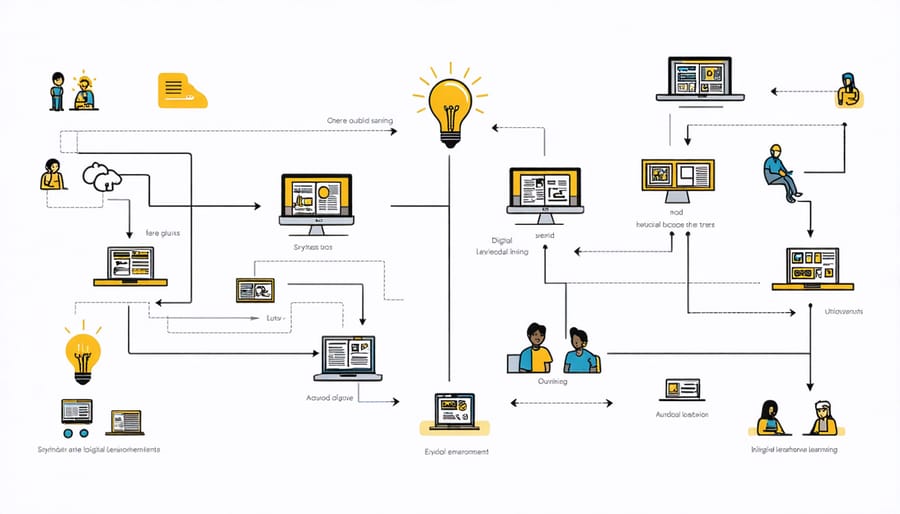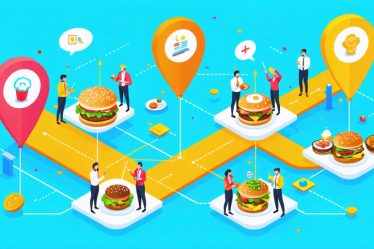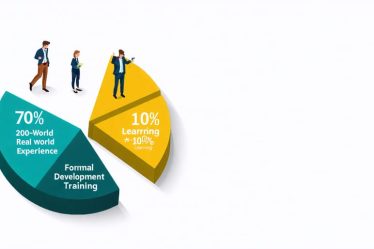
Imagine stepping into a classroom where the boundaries between digital and physical learning dissolve seamlessly. Hybrid learning models are revolutionizing education by combining the best of both worlds – the immediacy of face-to-face interaction with the flexibility of online learning. As someone who’s navigated both traditional and digital classrooms, I’ve witnessed firsthand how this innovative approach is transforming the way we think about education.
Gone are the days when we had to choose between the structure of in-person classes and the convenience of online courses. Today’s hybrid learning models offer a dynamic solution that adapts to our busy lives while maintaining the quality and engagement of traditional education. Whether you’re a working professional seeking to advance your career or an educator looking to enhance your teaching methods, hybrid learning provides the perfect blend of flexibility and effectiveness.
This innovative approach isn’t just about combining two different methods – it’s about creating a more resilient, accessible, and personalized learning experience that meets the demands of our ever-evolving world.
Why Traditional Business Education Needed a Makeover
The Modern Learner’s Dilemma
Picture this: you’re juggling a demanding career, family responsibilities, and a burning desire to advance your business education. Sound familiar? Today’s professionals face an unprecedented challenge in balancing their aspirations for learning with real-world commitments.
I remember Sarah, a marketing executive and mother of two, who shared her struggle: “I wanted to upgrade my skills, but traditional full-time programs weren’t an option. I couldn’t put my life on hold.” Her story resonates with countless others who find themselves torn between career growth and practical limitations.
The modern learner’s dilemma extends beyond just time management. There’s the question of maintaining work-life balance, managing financial commitments, and ensuring the learning experience actually fits into your daily routine. Add to this the rapidly evolving business landscape, where staying current is not just an advantage but a necessity, and you’ve got quite the challenge on your hands.

The Digital Revolution in Learning
Remember when learning meant sitting in a classroom with a notebook and pen? Those days feel like ancient history now! The digital revolution has completely transformed how we learn, bringing exciting possibilities right to our fingertips. Today’s modern tech solutions in education have opened doors we never imagined possible.
I’ve watched my own daughter navigate virtual classrooms with the same ease as she uses social media, and it’s truly remarkable. From interactive whiteboards to artificial intelligence-powered learning platforms, technology has made education more accessible, engaging, and personalized than ever before. Video conferencing tools let us connect with experts worldwide, while learning management systems track our progress and adapt to our unique needs.
What’s particularly exciting is how these digital tools have democratized education, making quality learning experiences available to anyone with an internet connection. Whether you’re a busy mom studying late at night or a professional upgrading your skills during lunch breaks, technology has made it possible to learn on your own terms.

The Sweet Spot: Combining Online and In-Person Learning
Virtual Learning Components
The digital side of hybrid learning opens up a world of possibilities that traditional classrooms simply can’t match. As someone who’s experienced both formats, I can tell you that virtual components bring incredible flexibility to your learning journey. Whether you’re catching up on lectures during your lunch break or participating in discussion boards while waiting for your coffee to brew, these digital tools make education fit your life – not the other way around.
Interactive learning platforms now offer everything from recorded video lectures and virtual whiteboards to real-time collaboration tools. I particularly love how online quizzes provide instant feedback, helping you gauge your understanding immediately. Plus, digital libraries give you 24/7 access to course materials, perfect for those late-night study sessions when inspiration strikes.
One of my favorite aspects is the variety of learning formats available. You might watch an engaging video presentation one day, participate in a virtual simulation the next, and then join an online group project through video conferencing. These different approaches cater to various learning styles and keep the material fresh and engaging.
The beauty of virtual learning components lies in their ability to create connections despite physical distance. Through discussion forums and virtual study groups, you can share insights with peers across different time zones, bringing diverse perspectives to your learning experience. It’s amazing how technology can make education both more accessible and more collaborative than ever before.
Face-to-Face Excellence
Despite the rise of digital learning, there’s something irreplaceable about face-to-face interaction in education. When I attended my first in-person session after weeks of online classes, the energy in the room was palpable. It’s these moments of direct connection that make the hybrid learning experience truly special.
Face-to-face components provide unique opportunities that screens simply can’t replicate. Group discussions flow more naturally, non-verbal cues enhance understanding, and spontaneous collaborations happen organically. Think about those “aha moments” that occur when bouncing ideas off classmates during coffee breaks or the lasting professional relationships formed through shared experiences.
The physical classroom environment also offers immediate feedback and personalized attention. When you’re struggling with a complex concept, having an instructor right there to guide you through it makes all the difference. Plus, hands-on activities and practical demonstrations become much more effective when experienced in person.
For many learners, these face-to-face sessions serve as motivation milestones. They provide structure to the learning journey and create accountability. Whether it’s monthly workshops or weekly meetups, these in-person touchpoints help maintain momentum and engagement throughout the course.
The magic of hybrid learning lies in how it balances these valuable face-to-face interactions with the convenience of online study. It’s not about choosing one over the other – it’s about getting the best of both worlds.
Real Results: My Experience with Hybrid Business Learning
Flexibility Meets Structure
Picture this: you’re sipping your morning coffee while attending a virtual lecture, then later that day, you’re engaging with classmates in a face-to-face workshop. This is the beauty of hybrid learning – it bends to fit your life, not the other way around. The challenge of balancing work and education becomes more manageable when you have the freedom to choose when and where you learn.
But don’t mistake flexibility for a lack of structure. Hybrid learning models combine the best of both worlds: the convenience of online learning with the accountability of in-person sessions. You’ll find scheduled check-ins, deadlines, and collaborative projects that keep you on track, while still having the autonomy to complete assignments when it works best for you.
I remember Sarah, a working mom who thrived in her hybrid business program because she could watch lectures after putting her kids to bed, yet still enjoyed monthly in-person networking events with her cohort. The structured flexibility allowed her to maintain her commitments while pursuing her educational goals.
This approach works because it acknowledges that modern learners need both freedom and framework – the space to breathe and the support to succeed.
Building Real Connections
One of the biggest concerns I hear from women considering hybrid learning is whether they’ll miss out on those valuable networking opportunities that traditional in-person programs offer. Let me assure you – hybrid learning can actually enhance your connection-building experience in unique and meaningful ways.
Through my own journey in hybrid education, I’ve discovered that the blend of online and in-person interactions creates multiple touchpoints for relationship building. Digital platforms allow for ongoing conversations that extend beyond classroom hours, while face-to-face sessions provide the perfect opportunity to deepen those online connections.
Think of it as having the best of both worlds: you can participate in virtual study groups while preparing dinner, engage in meaningful discussions during your lunch break, and then bring those online relationships into the real world during in-person sessions. Many hybrid programs also incorporate team projects that combine virtual collaboration with physical meetups, helping you develop both digital communication skills and traditional networking abilities.
The key is to be intentional about your engagement. Share your experiences in online forums, reach out to classmates for virtual coffee chats, and make the most of in-person sessions when they occur. These varied interactions often lead to more diverse and sustainable professional relationships than purely traditional networking might offer.

Making Hybrid Learning Work for You
Success in a hybrid business program isn’t just about showing up – it’s about creating a strategy that works for your unique lifestyle and learning style. As someone who’s navigated both traditional and hybrid programs, I’ve discovered that the key lies in mastering a few essential effective learning strategies that make the most of both online and in-person components.
First, establish a dedicated workspace at home that mirrors your classroom environment. This could be a corner of your dining room or a small home office – what matters is that it’s consistently available and free from distractions. I’ve found that having proper lighting, a comfortable chair, and all necessary materials within reach helps maintain focus during online sessions.
Time management becomes your best friend in hybrid learning. Create a weekly schedule that blocks out specific times for online coursework, in-person classes, and study sessions. Consider your peak productivity hours – are you a morning person or do you focus better in the evening? Align your independent study time with these natural rhythms.
Stay connected with your peers, even during online portions of the program. Form virtual study groups, participate in discussion boards, and maintain active communication through class channels. This networking aspect isn’t just about academic support; it’s about building professional relationships that can benefit your career long after the program ends.
Make technology work for you by familiarizing yourself with all the digital tools your program uses. Take time to explore features like virtual breakout rooms, collaboration tools, and online resources. Remember to have backup plans for technical issues – keep important phone numbers handy and know alternative ways to access course materials.
Finally, actively engage with both online and in-person components. Treat virtual sessions with the same professionalism as face-to-face classes, and use in-person time to strengthen connections and clarify complex concepts.
As we’ve explored throughout this article, hybrid learning models are revolutionizing business education in ways we couldn’t have imagined just a few years ago. By combining the flexibility of online learning with the irreplaceable value of face-to-face interactions, these programs are creating more accessible and effective educational experiences for busy professionals like us.
From my own experience teaching in hybrid environments, I’ve seen firsthand how this approach brings together the best of both worlds. Students can maintain their work-life balance while still building meaningful connections with peers and mentors. The future of business education looks increasingly hybrid, with technology continuing to evolve and enhance these learning experiences.
As we move forward, hybrid learning isn’t just a trend – it’s becoming the new standard in business education. Whether you’re considering advancing your career or exploring new skills, hybrid learning offers a practical, engaging path to achieve your goals while maintaining the lifestyle you’ve worked so hard to build.



